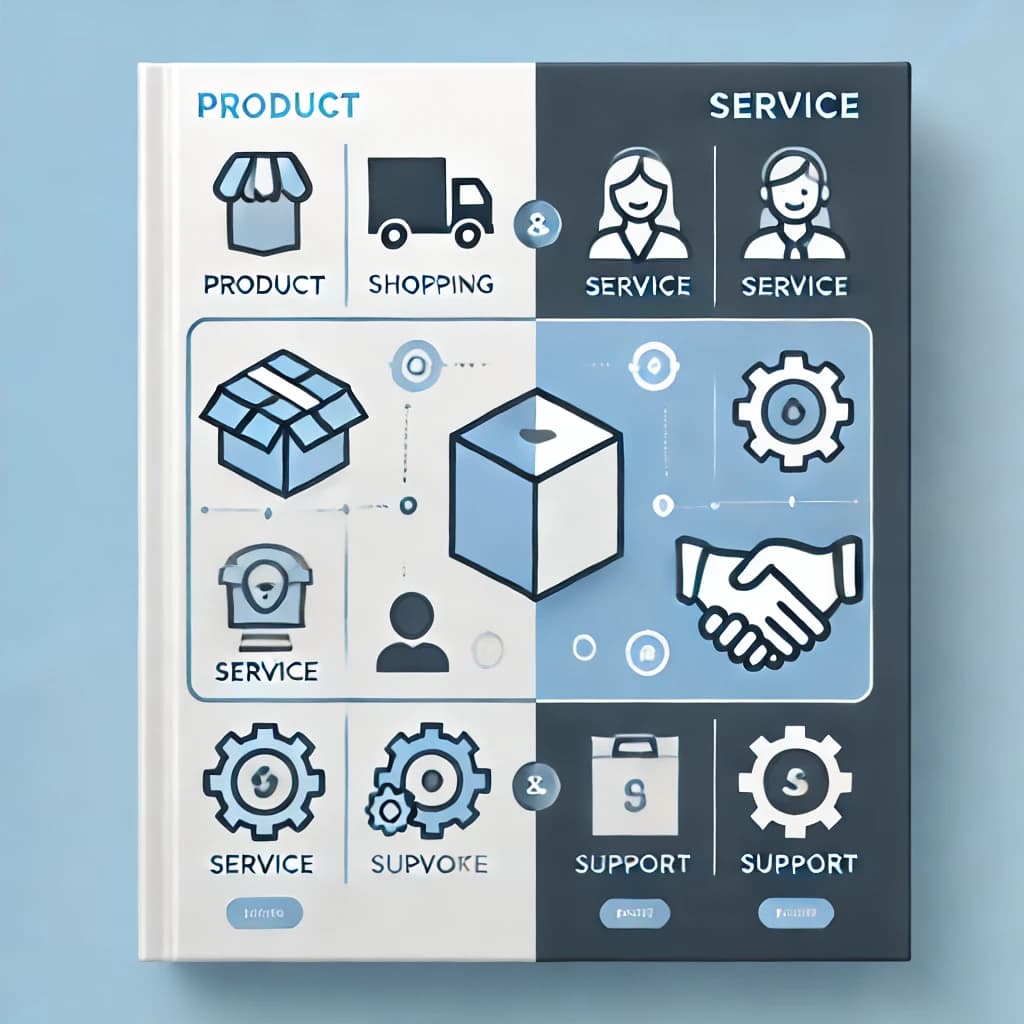What are you looking for?
THE TECH PRODUCT
THE DESIGN STUDIO
THE MEDIA HOUSE
THE MARKETING STUDIO
THE AR LAB

Learn the key differences between product and service marketing, including strategies, challenges, and real-world examples to help your business thrive.
In the world of business, marketing plays a crucial role in reaching and engaging customers. However, the approach to marketing isn’t the same for every offering. There’s a distinct difference between product marketing and service marketing, and understanding these differences is key to creating successful marketing strategies for your business.
While products are tangible, physical items that can be seen, touched, and owned, services are intangible experiences or solutions provided to customers. This fundamental difference shapes the way businesses market their products versus services, affecting everything from branding and pricing to advertising and customer interaction.
Product marketing refers to the process of promoting and selling a tangible item. It involves creating strategies that highlight the product's features, benefits, and value proposition, with the goal of driving sales.
Example:
Consider an electronics company selling smartphones. Their marketing strategy would focus on promoting the product’s technical specifications, price, availability, and customer reviews.
Service marketing, on the other hand, is focused on promoting intangible offerings. Services are experiences or processes, so marketing strategies emphasize trust, expertise, and customer relationships.
Example:
A consulting firm offering business advice would market their service by showcasing their expertise, past client success stories, and personalized solutions.
Now that we understand what product and service marketing are, let’s dive deeper into the main differences between the two:
Featured Snippet:
When marketing products, the focus is on highlighting features, benefits, and price points. Here are some common strategies:
Example:
Apple markets its iPhones by showcasing the product’s cutting-edge technology, sleek design, and innovative features through TV ads and social media campaigns.
In service marketing, the focus is on building relationships and trust. Here’s how businesses approach service marketing:
Example:
A law firm may market its services by showcasing client testimonials, case studies, and emphasizing personalized attention to each client's legal needs.
Solution:
Focus on emphasizing unique product features and highlighting customer reviews to build trust and demonstrate the product’s value.
Solution:
Build a strong brand reputation through excellent customer service, personalization, and consistent quality delivery.
Coca-Cola markets its beverages as a lifestyle product. Their strategy focuses on branding, nostalgia, and emotional connections rather than just the product itself.
Takeaway:
For product marketing, creating an emotional connection with your audience can enhance brand loyalty.
Airbnb markets its services through storytelling, featuring real users and their experiences. They focus on trust and reliability by showcasing reviews and user-generated content.
Takeaway:
For service marketing, emphasize customer experiences and use trust-building tools like reviews to assure potential customers.
Personalization is becoming increasingly important in both product and service marketing. Businesses are now using AI-driven data to deliver personalized recommendations and offers, improving customer experiences.
With the rise of digital channels, both product and service marketing are moving towards omnichannel strategies. This means delivering a seamless customer experience across platforms such as mobile apps, websites, and social media.
Consumers are becoming more eco-conscious, so marketing campaigns that highlight sustainable practices or eco-friendly products are becoming more popular in both product and service industries.
The main difference is that product marketing focuses on tangible items that customers can physically own, while service marketing promotes intangible experiences that cannot be owned but are experienced.
Yes, many companies offer both products and services. For example, a software company may sell physical products like servers but also provide consulting or tech support services.
It depends on the business. Products are easier to demonstrate because they are tangible, while services can be harder to convey since they rely on customer experiences and trust. However, both require tailored strategies to succeed.
Whether you're marketing a product or a service, understanding the core differences between these two approaches is key to developing successful marketing campaigns. Product marketing focuses on tangible benefits and differentiation, while service marketing emphasizes trust, personalization, and customer relationships. By addressing the unique challenges of each and adopting the right strategies, businesses can drive growth and build lasting customer loyalty.